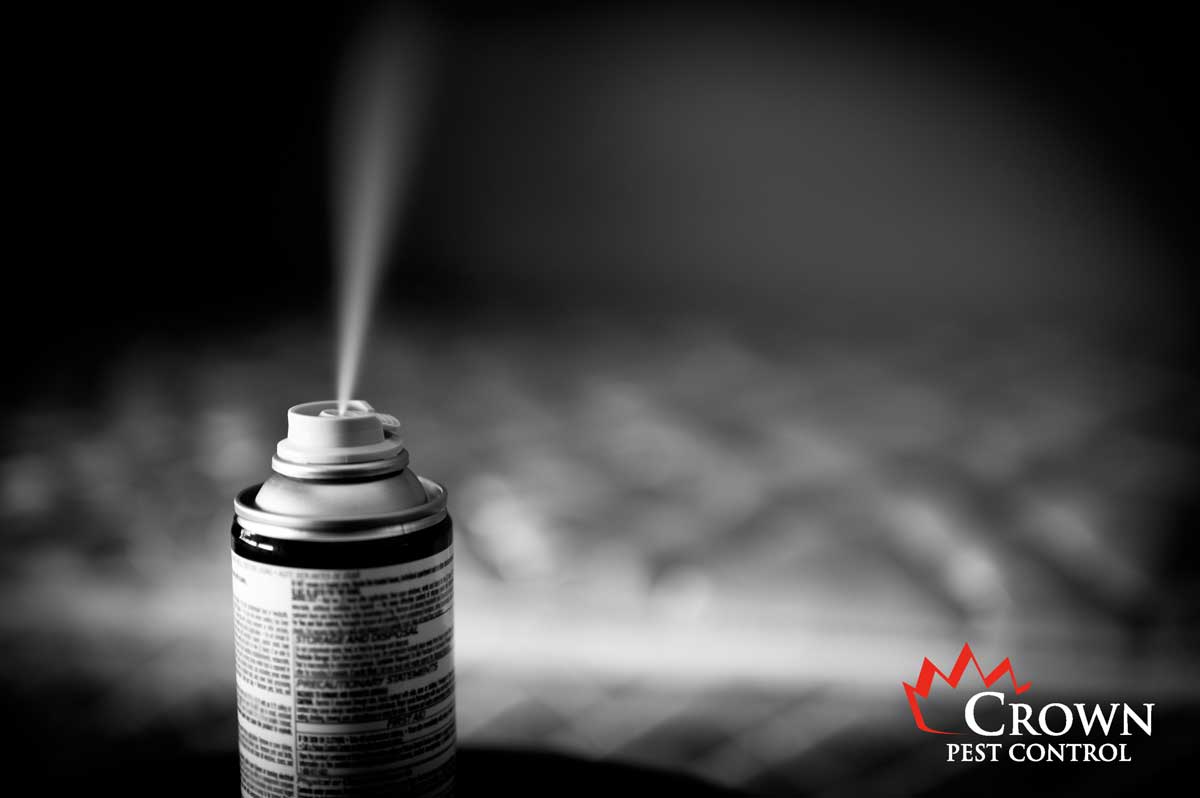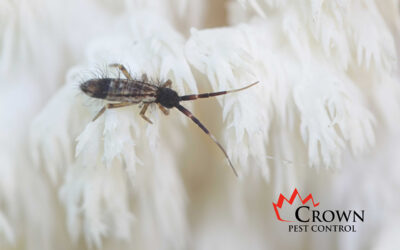
Beware of Bug Bombs
Are you having trouble getting rid of pests in your home? Are bug bombs your only solution? Well, think again. While bug bombs may seem like a quick and easy fix, they come with many risks that you should be aware of. In this post, we’ll tell you about bug bombs, their risks, and some alternatives to using them. Keep reading to learn more.
What are bug bombs and what do they do?
Bug bombs, also known as total release foggers (TRFs), are aerosol propellant pesticides that come in a can and are released in a single burst. They are used to kill flying insects, such as mosquitoes, as well as crawling insects, such as cockroaches, fleas, and ants. Bug bombs work by filling an enclosed space with insecticide, which then disperses throughout the area, with the goal of killing any bugs that are present.
How effective are bug bombs at eliminating pests?
Bug bombs are a popular method for controlling the population of pests, but how effective are they really? Bug bombs release a fog of insecticide into the air, which is then intended to kill bugs on contact. However, there are a few potential problems with this approach. First, bug bombs don’t always reach every nook and cranny where bugs may be hiding. Second, some bugs are resistant to the chemicals in bug bombs, meaning that they can survive the treatment and emerge unscathed. Finally, bug bombs can be dangerous to humans and pets if used incorrectly, so it’s important to read the directions carefully before using them. Considering these potential drawbacks, bug bombs may not be the most effective way to get rid of pests.
What are the risks associated with using bug bombs?
Bug bombs, or total release foggers (TRFs), are devices that release a pesticide aerosol into the air to kill insects. They are commonly used to control cockroaches, fleas, and flying insects. While bug bombs can be an effective way to diminish pests in your home, they also come with some risks. For example, bug bombs can be dangerous to children and pets if they are not used correctly. If people or animals are in the area when the bug bomb is released, they can inhale the pesticide and experience respiratory problems, nausea, and dizziness. In addition, bug bombs can cause fires if they are used near an open flame or other heat sources. As a result, it is important to use bug bombs with caution and only as directed on the label.
In 2012, the Centers for Disease Control and Prevention (CDC) released a report on the risks associated with bug bombs. The CDC found that bug bombs can be dangerous to humans and animals if used incorrectly, and they called for improved labels on all bug bomb products. In particular, the CDC recommended that bug bomb labels should include a list of all the ingredients in the product, as well as clear instructions on how to use the bug bomb safely.
How to avoid the risks associated with bug bombs?
Bug bombs or total release foggers (TRFs) can also be dangerous, and precautions should be taken to avoid risks. One of the biggest dangers posed by bug bombs is the risk of fire. Bug bombs release a large number of flammable chemicals into the air, and if these encounter an open flame, they can quickly ignite.
Additionally, bug bombs can be toxic to pets and children if used improperly. To avoid these risks, it is important to read the instructions on bug bomb labels carefully and only use them in well-ventilated areas.
Each year, there are reports of people being injured or even killed by TRFs or bug bombs. In most cases, these accidents occur when people fail to follow the safety precautions on the product label. The EPA has issued a set of safety guidelines for using TRFs, and these should be followed closely to avoid any accidents.
Some of the key safety tips include ventilating the area before using the fogger, removing all people and pets from the area, and using the fogger in a well-ventilated room. To learn more about these steps and to help to ensure that your use of a total-release fogger is safe and effective, review the EPA safety precaution videos.
Alternatives to bug bombs for getting Reduce of pests
If you’re looking for a way to eradicate pests, you may be considering a bug bomb. However, bug bombs only kill adult insects, so they don’t do anything to prevent future infestations. In addition, they can be dangerous to use, as they release harmful chemicals into the air that can be dangerous to breathe in.
Another way to reduce pests is to keep a clean home. Regularly sweep and vacuum floors, clean up spills promptly, and wash dishes after meals. In addition, seal any cracks or holes where pests might enter the home.
If you’re looking for a safer and more effective way to control pests, Crown Pest Control can help. We offer professional pest control services that are designed to target all stages of the insect life cycle. This means that not only will we eliminate the adult insects, but we’ll also work to prevent future infestations. As a result, you can rest assured knowing that your home is protected from pests.
What we have learned
Bug bombs can be an effective way to get rid of pests, but they can also be dangerous if used improperly. To avoid any risks, it is important to read the instructions on bug bomb labels carefully and only use them in well-ventilated areas. Additionally, bug bombs should not be released by any open flame.
If you’re looking for a safer and more effective way to get rid of pests, Crown Pest Control can help. We offer professional pest control services that are designed to target all stages of the insect life cycle. As a result, you can rest assured knowing that your home is protected from pests.
Crown Pest Control Action Plan
Step 1: Inspection
The First step in effectively addressing a pest problem is to inspect the property. Our team member will identify potential entry points where pests may gain access and pinpoint harborage areas where they tend to hide or nest. They also determine the type of pest and the severity of the pest problem. This assessment sets the groundwork for targeted and tailored pest control measures.
Step 2: Initial Treatment
The Second is the initial treatment of the property by one of our trained service technicians. We utilize the most effective materials to treat your pest problems. Our treatment includes the critical areas inside and outside the house. Areas like the kitchen, storage spaces, garages, and other harborage areas - where bugs live, breed, and hide.
Step 3: Maintenance
The Third step is implementing an ongoing maintenance program such as Crown Select to prevent future generations of insects from invading your home or business. This preventative approach outside will prevent future insects from invading the inside of your home or business. This is what we call “Peace of Mind.”
Family-Owned Pest Control in Charlotte
Family-owned pest Control in Charlotte Introduction Choosing the right pest control service can significantly affect the comfort and safety of your home. In Charlotte, NC, many homeowners are opting for family-owned pest control businesses over larger corporate...
Tips and Tricks for Mice in Your Car
Tips and Tricks for Mice in Your Car Dealing with Mice in Your Car When Temperatures Drop Introduction Are you facing the problem of mice infestation in your car during cold temperatures? In this blog, we will explore the issue, discuss its significance, and provide a...
Invasion of Cockroaches in Cold Weather
Invasion of Cockroaches in Cold Weather Are you tired of dealing with cockroach invasions during Charlotte’s cold winter months? Don't worry; we've got you covered! In this blog, we will explore the increased presence of cockroaches in cold weather and provide...
Restaurant Pest Control In Matthews, NC
Restaurant Pest Control In Matthews, NC As a restaurant owner in Matthews, NC, you know that maintaining a clean and hygienic environment is crucial to your business's success. At Crown Pest Control, we understand this too and provide top-notch pest control services...
European Hornets
European Hornets in Charlotte NC: What You Need To Know If you're a homeowner in Charlotte, North Carolina, it's important to be aware of the dangers of European hornets. These pests can cause significant damage to your property and should be removed as soon as...
Do Springtail Bugs Bite?
Springtails are harmless tiny creatures you may find jumping or scurrying around your home.










